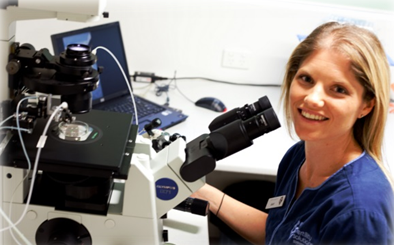By Jean Scott
In July 2013, our clinic implemented new guidelines for freeze all cycles. The reason being, data has shown that women undergoing a fresh egg collection cycle, who have raised hormone profiles on the day of their trigger injection, have a poor pregnancy prognosis. This is largely because the endometrium is unlikely to be receptive to an embryo implanting, essentially wasting a good embryo.
In light of this, the clinical team recommended new cut off levels for patients having a fresh embryo transfer or not, in order to optimise the use of good quality embryos created during a cycle. This meant that more women were having freeze all cycles, which is where a fresh embryo transfer is postponed for a few months until the hormones have returned to normal levels. This of course relies on healthy embryo development and an embryo reaching the blastocyst stage (5/6 days in culture) for freezing, along with subsequent survival following thawing, which unfortunately can never be guaranteed.
The exciting news is that once embryos have been frozen at the blastocyst stage, couples have an excellent chance of achieving their long awaited pregnancy. Data collated from the first 6 months after implementing these new guidelines have shown that of all the egg collection cycles, only 14% of women have required a freeze all cycle. However of these ladies, 80% have become pregnant after their very first Frozen Embryo Transfer (FET), and 100% within their first two FETs! The overall FET clinical pregnancy rate regardless of if there was or wasn’t an initial fresh embryo transfer, is currently 52% per embryo transfer.
Our success rates with FETs to date is very encouraging for those couples who face the initial disappointment of not being able to have an embryo transfer in conjunction with their egg collection or are having a subsequent frozen embryo transfer.
For more information on frozen embryo transfers, please contact our Sunshine Coast or Bundaberg office.

